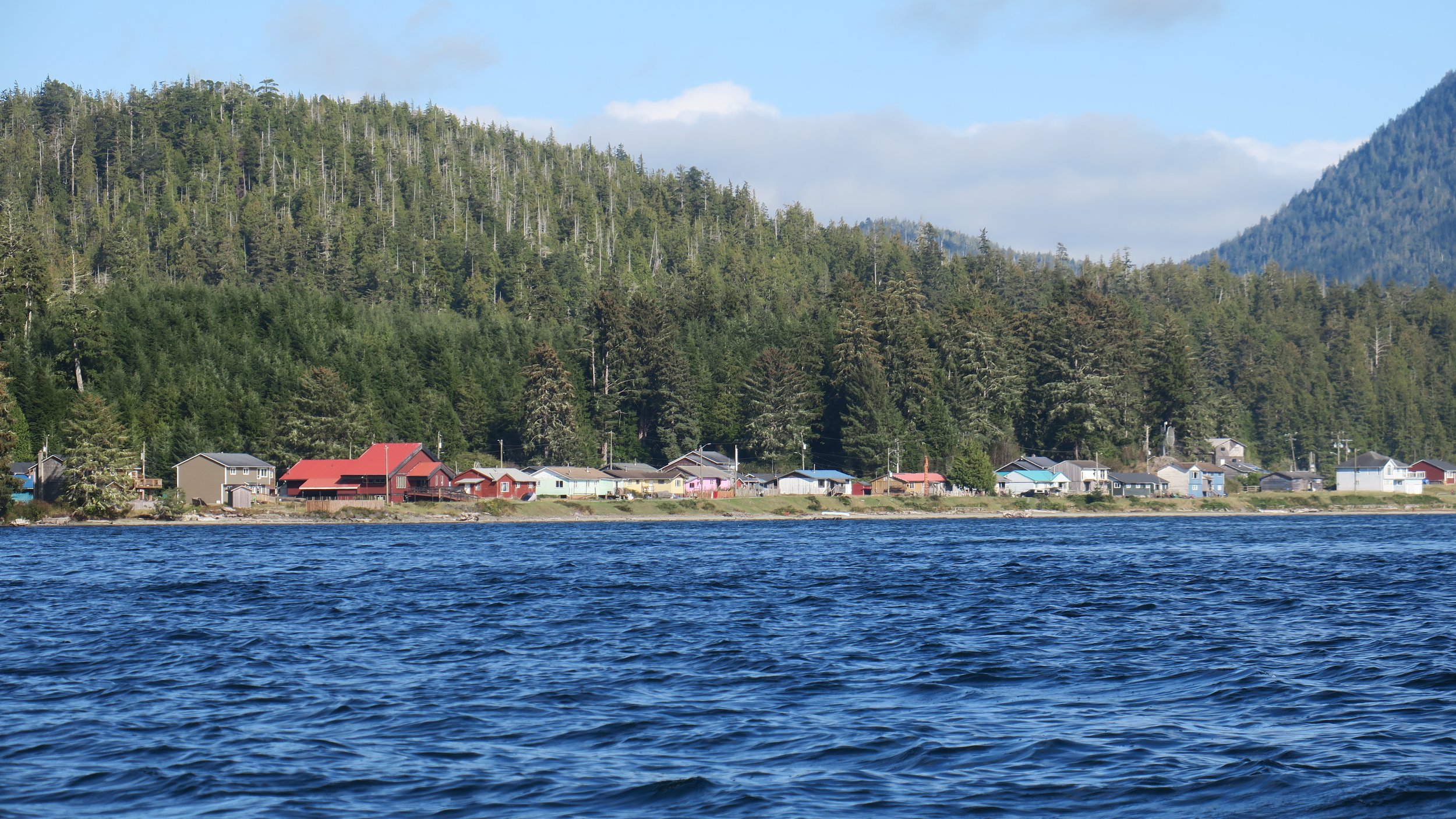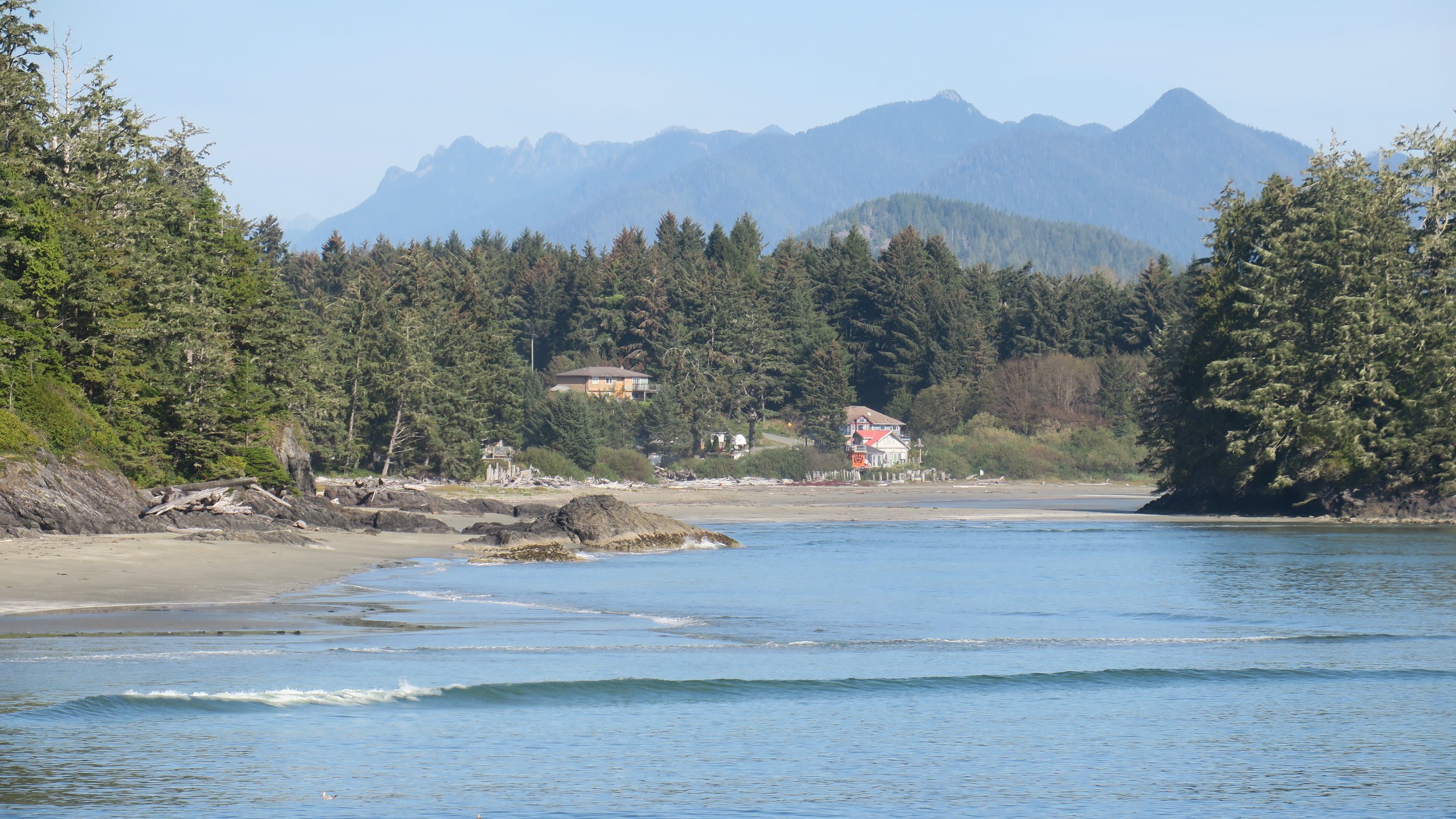THIS DRAFT IS FOR INTERNAL DISCUSSION PURPOSES WITHOUT PREJUDICE TO THE COLLECTIVE ABORIGINAL TITLE & RIGHTS OF THE HEREDITARY CHIEFS OF THE TLA-O-QUI-AHT AND IS FOR DISCUSSION ONLY
hisiikcumyin - The Way We Need To Go
ƛaʔuukʷiʔatḥ driven and designed negotiations, engaging Canada and B.C.
in the process of “reconciliation”
hisiikcumyin pronounced “his-SEEK-to-me-un” is a ƛaʔuukʷiʔatḥ phrase that translates as “the way we need to go”. On behalf of ƛaʔuukʷiʔatḥ ḥaw̓iiḥ, hakuum, and their musčim, we have engaged the Province of British Columbia (B.C.) and Canada to begin to address some of our community needs, give shape and meaning to “reconciliation”, while we take our rightful place as the governing body over Tla-o-qui-aht territory.
Our approach is proactive, with reconciliation occurring on ƛaʔuukʷiʔatḥ terms and is done as an assertion of inherent ƛaʔuukʷiʔatḥ authority of our ḥaw̓iiḥ. Both Canada and B.C. have committed to reconciliation with Indigenous peoples, and ƛaʔuukʷiʔatḥ is being hands-on in defining the terms and conditions of this commitment.
We are holding the government accountable to their commitment to implement the United Nations Declaration on the Rights of Indigenous Peoples (UNDRIP), and by the Principles that Guide the Province of British Columbia and Canada’s Relationship with Indigenous Peoples (The Principles). All discussions will build in a recognition of the right to self-determination, including the inherent right of our ḥaw̓iiḥ to self-government.
hišukniš c̓awaak
“We Are All One”
While the respective governments (ƛaʔuukʷiʔatḥ, Canada and B.C.) agree that they may have significant differences, they acknowledge the ƛaʔuukʷiʔatḥ principle of hišukniš c̓awaak (his-shuk-nish-tsa-waak) and are willing to explore new ways to move forward in the relationship for the benefit of future generations.
To date, there are three negotiation process agreements at varying stages. B.C. and Canada have different jurisdiction and authority from each other, thus we have strategically engaged each separately with Bilateral Agreements. Following establishing these, then a Tripartite Agreement will allow discussions that need all three governments at the table where responsibilities overlap, to enhance services to improve the quality of life for all.
hisiikcumyin Pathway Agreement (Bilateral agreement with B.C.) - signed Oct 14, 2021
hisiikcumyin Memorandum of Understanding (Bilateral agreement with Canada) - drafted for signing in near future
nupp̓iiłčik Accord (Tripartite agreement with B.C. and Canada) - drafting phase, signing date yet to be determined
From left to right: nakʷiimałni (Simon Tom), nuupiitačiƛ (Former Chief Moses Martin) & nuukmiis (Robert Martin)
Photo credit: Devon Black
“The signing of this important document represents 19 years of discussions. We are pleased that we are finally moving forward on the path of reconciliation.””
nuupiitačiƛ (Former Chief Moses Martin) & Hon. Murray Rankin
Photo credit: Devon Black
From left to right: tiitstiitskau auk suup (Lorena Frank), nuukmis (Robert Martin), nakʷiimałni (Simon Tom), nuupiitačiƛ (Former Chief Moses Martin), Hon.Murray Rankin, Devon Black, ḥiiškʷisinupšiił (Alex J. Frank), Joe David, Chris Seitcher, Hon.Gord Johns.
Photo credit: John Watson
Work Plan and Steering Committee
The reconciliation process will embody the Vision and Mission of the ƛaʔuukʷiʔatḥ First Nation (quoted below). It will be guided by our timeless Ancestral ƛaʔuukʷiʔatḥ laws and principles. The overall reconciliation process is managed by the Reconciliation Steering Committee, whose objective is to advance community objectives and outstanding commitments to ƛaʔuukʷiʔatḥ in previous agreements through negotiations with Canada and B.C. This process will address real community needs and strives to see results within the negotiations, focusing on what is achievable to address human well-being.
A new structure was finalized January 2022 with the creation of a 2022-2024 Work Plan and a Reconciliation Steering Committee. The Steering Committee is comprised of both elected and hereditary leadership representation, 2 Lead Co-Negotiators (Saya Masso & Chief Elmer Frank), advisors and elders, with technical support from Jim Chisholm (Tribal Administrator), John Watson (Strategic Advisor), and Saul Brown (Governance Advisor).
“VISION
We respectfully live, work and celebrate together in a healthy, collaborative community. In unity, we support, pursue and provide all viable economic, health, cultural and educational opportunities for our members. Our direction is based on the harmony of strong administration and good governance that values our ha’wiih ha-houlth-ee and the laws of nature.””
“MISSION
His-shuk-nish-tsa-waak, (we are all one)
We are here. We restore and promote our traditional values, we provide enhanced services to improve the quality of life for all.””
ƛaʔuukʷiʔatḥ Community engagement is integral to these discussions, and to the creation of term sheets and setting community priorities
Following the negotiation agreements being signed, exploratory discussions will be an ongoing, multi-year process. Each identified Priority Topic above may have a sector table, which may include the following steps:
Collaboratively create term sheets for each sector table
Bring each term sheet to the ƛaʔuukʷiʔatḥ Community for community consultation
Negotiation table to update term sheet with Canada / B.C. based on community feedback
Collaboratively create three-year action plans to achieve tangible success in each sector
Identify gaps in existing programs and policy for implementing initiatives in term sheets
Formulate programs and policy options to fill in the gaps - seek mandate and budget for implementation
Assess the successes and where we can improve upon for future negotiation tables.
Community information along this hisiikcumyin reconciliation path with ƛaʔuukʷiʔatḥ, B.C., and Canada:
“The Tribal Park Designation and the Principles of Hishukish Tsawaak are intended to deliver a healthy ecosystem for the unborn generations to come. The Tribal Park is a model for sharing the Haahuulthii and is also means of recognizing the inherent rights and title of Tla-o-qui-aht to manage and monitor the Haahuulthii.””
Next Steps
The easing of COVID restrictions will allow ƛaʔuukʷiʔatḥ Chief Negotiators and technical support to organize meetings as we establish the specific achievables and term sheets for each of the priority subject areas to occur over 2023-2024. Canada and B.C. have provided funding for ƛaʔuukʷiʔatḥ to allow this to occur.
Stay tuned for upcoming Community Meeting dates, to learn more about how the negotiation tables are being set and how you can participate and guide our leadership and staff in this process. Check this page frequently for any updates and for further questions and information contact Saya Masso lands@tla-o-qui-aht.org & Elmer Frank elmer.frank@tla-o-qui-aht.org .







